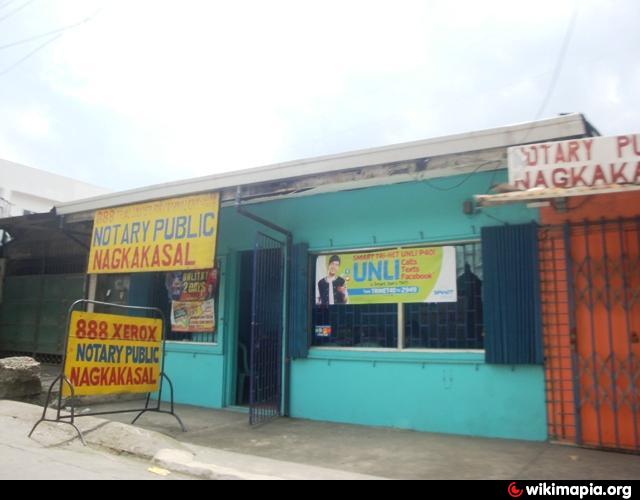How to Get a Document Notarized in the Philippines
Business establishments and government agencies often require notarized signatures to avoid fraud among contracts and other legal documents. A notarized document will serve as proof that the said document has been officially verified by an independent party who in turn had verified that the people signing the document are who they say they are. Notarized documents are also self-authenticating, meaning signers need not testify in court to verify the authenticity of their signatures.
Remember that notary publics are usually not lawyers and cannot offer legal advice so you have to read and understand the contents of your document before having it signed and notarized.
Finding a Notary
Finding a notary is easy. You can find them at places where their services are needed like in municipal halls, banks, law offices, government agencies, courthouses, and on business areas.
Documents that Need to be Notarized
There are different documents that need to be notarized. Most common among them are affidavits, sworn statements, Power of Attorney, medical documents, and documents that transfer assets to another person like wills, deeds, and trusts. So before going to a notary public, make sure that the document you have really requires a notarized signature.
Procedure
 The process of notarizing a document may vary from place to place, but generally, the most common procedure is as follows:
The process of notarizing a document may vary from place to place, but generally, the most common procedure is as follows:
Step 1: Documents
Bring the unsigned document to the notary public. Do not sign the document ahead of time. The notary public will not entertain documents already signed without their presence. Bring proper identification so the notary public can verify your identity. Proofs of identity should be valid. Among those widely accepted are passport, driver’s license, TIN, SSS ID, and NBI Clearance. The notary’s discretion will be exercised on clients who lost their ID’s on floods, fires, and other similar disasters.
Step 2: Verification
The notary public will verify who you are based on your identification. He/She will check your documents. In the case of affidavits, most notary publics have a prepared document for you to sign.
Step 3: Signing of Documents
If your identification and document are clear, he/she will ask you to sign the document. The notary will also observe if you are signing under duress or if someone is with you and is forcing you to sign against your will.
Step 4: Witness
Among the signatories of the document is at least one credible witness who is personally known to either the notary public or to the individual signing the document.
Step 5: Recording
The notary will then record the transaction on his/her journal. The date and place of the transaction will be logged on the journal along with all the details.
Step 6: Notary Stamp
If everything went well, the notary will then stamp the document with an official public stamp or seal. Your document is now notarized.
Payment
Notarial fee varies depending on the place and the type of document you want to notarize.
Power of Attorney
In case of a person acting as representative for someone, a notary will take extra measures to ensure the identity. An authorization letter will be required before conducting business with the representative. It is advisable that the representative acting on someone else’s behalf should bring the document that gives you authority. The notary will look at it to help verify the legality of the document and your identity.








Hi, how much is the cost to notarize a 2.5M Php deed of property sale in Manila. Thanks.
can u give me a notarized request or authorization to present in social security system to get a photocopy or valid certification of my late partner’s sss e4 form? it was turned into ash when fire incident happen in our place year 2010.
can I have a notarized request or authorization to present in social security system to get a photocopy or valid certification of my late partner’s sss e4 form? his copy turned into ash when fire incident happened in our place year 2010. hope to hear a good news from ur good office
Hi! I’d like to know how to ontain a document that was notarized in the past (1968)? I mean the government agency where I can obtain the records. Thank you.
Hi, just to correct your article: ALL NOTARY PUBLIC ARE LAWYERS. Only members of the Philippine bar are allowed by the courts to notarize documents.
If the person notarizing your document is NOT a lawyer, then that’s a fake notary public. Always ask for their roll of attorney number and IBP number.
Hi,Document is not notarized and recorded in archive is it legal.
i need to have my new Will notarised and witnessed. would prefer to have it done in bonifacio or makati.
Hi, what will i bring zerox or original copy? Because im not at home right now i just have a copy in my USB just print on it.
How can we get a notarized authorization for my kids to travel In Abroad if their Father don’t have any Valid Identifications?
Fantastic site. Plenty of helpful info here. I’m sending it to some
friends ans additionally sharing in delicious.
And certainly, thank you on your effort!
Are all notarized document have a record in Notary Public?
Hello po… Ask ko lang po, ang Birth Certificate po namin ng kapatid ko ay magkaiba ng middle name. Ano po ba ang dapat naming gawin para makuha ko po sya at makapg visit visa dito s UAE
Maraming slamat po sa makakasagot. GOD BLESS!
Hi, maam! Visit po kayo sa City Hall kung saan nakarehistro ang birth certificate nyo magkapatid. Doon po kayo maaaring magtanong sa proseso.
The documents i notarized is missing. The notary public i went to to notarized it where gone. How can i get a copy of the notarized docs? Thank you.
How much notary fee for memorandum of agreement to sell a property?
MY deed of sale document is notarized by a notary public dated 2007. WHen i asked for a certified true copy of the document dated 2007, Manila CIty hall has no record of that document of 2007. What should I do now. BIR requested a certified copy of DEED of Sale notarized 2007.
Good afternoon po..ngayon pong lockdown,,San pong good office any open po para sA notarials..need po na min mgpa notary po.thank uu po.waiting po ako. God bless po.
Where can we obtain archived notarized deed of sale? 2007 notarized, seller is Family Bank & Trust Company.
Can you teach me the step-by-step process to have a notarized SPA for getting diploma and TOR to be used for employment in abroad wherein the principal is currently in overseas and I, as the agent, is currently here in the PH?
Hello po, ask ko lang po if allowed ba ung wala si atty. pero may inauthorized person syang magpirma for notary? May seal, pumirma sya sa name ni atty and may sinulat sa book
Can I get notarized deed of sale of real properties owned by our parents from the year 1945 to 1980,due to the documents was lost by floods. I am from cagliliog, tinambac, camarines sur.
Hello po, saan ba makikita ang notarized deed of sale na patay ang nagnotarized. Nawawala kasi ang copy kong original deed of sale. Salamat.
Good Evening po. Tanung ko lang po, mag papa notarized po ako mg affidavit pero mother ko po ang mag aasikaso. Need po ng SPA? Mother ko po ang mag papa-notarized in my behalf
How much po bayad to notarized PDS form?
Pwede po naming ipa notaryo ang deed of sale na matagal na naming nabili?
Hello po, Saan po pwedi maka notarize ng letter of invitation for my non-filipino fiance po na bibisita dito sa pinas?
Where can I get the list of licensed notary public coz I have many Deed of Sales issued fraudulently so I like to confirm if the lawyer who notarized it were licensed. This happened in my province. Thanks
Hi I’m planning to go to the Philippines to see my future wife and soon she’s going to the states to marry me. I need proof that we meet in real life can I get a statement notarized so show real proof we met in person. How much dos it cost and where to go get it done
Hi, ask ko lang po pano kung nag pagawa cla ulit ng deed of sale without the permission of the true owner, ninakaw po nila ang original deed of sale at pinapalitan po ito, Now, ang sabi nila pumirma ang mga tru owner, but pinagtataka po namin bulag po ang babaeng may ari at senior na po ang asawa nito..as per the husband ang tanging pinirmahan nya lng ayy nung na ospital ang lola namin, at nung nag bigay xa ng autorization letter sa anak nyang mag asikaso sa pagka matay ng lola ko..at yung anak na binigyan ng autorization ay yung anak na nagsasabing xa na ang bagong may ari ng property. Last June 21,2023 around 3pm, pinasok nila ang bahay ng lolo ko at giniba nag lahat ng gamit pati ang bahay, binugbog din nya ang mama ko na kapatid, dahil sya nga daw ang may ari ng property at walang makakapasok na hindi nya gus2..need your advise badly po..may atty po ba dito ?
ipa TULFO niyo na lang po. or punta po kayo sa NBI.
Does the Philippines have a notion of a mobile notary? I have a house bound person in Manila that needs a notary and the US States where the docs will be recorded do not accept online notaries.